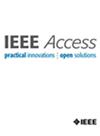A Multiphysics Dataset Generation Procedure for the Data-Driven Modeling of Traction Electric Motors
IF 3.4
3区 计算机科学
Q2 COMPUTER SCIENCE, INFORMATION SYSTEMS
引用次数: 0
Abstract
This paper presents the work done to address two main challenges in the simulation and design of electric machines for traction applications. On one hand, the modeling process is becoming increasingly complex as the demand for higher efficiency, high power density, and low cost pushes the speed and compactness of the motor to high levels. As a result, the interactions between multiple physical domains (e.g., electromagnetic, thermal, structural, etc.) can no longer be neglected, even in preliminary designs. Consequently, research into new modeling solutions in this area is currently active and widespread. On the other hand, new computational methodologies based on data-driven machine learning are becoming increasingly widespread as the computational power available for this task increases. However, to assess their performance and realize their potential in surrogate and meta-modeling electrical machines, a standardized benchmark for comparing these new approaches is needed. To address these challenges, the paper presents an open-source dataset that provides a reliable foundation for the multi-physical analysis of electric motors used in traction applications. One of the main novelties of this approach is that geometrical and physical data of the motor configuration are shared among different analysis codes. Attention is focused on tailoring the numerical discretization so that the same mesh can be used in different domains, avoiding data conversions and possible numerical inaccuracies. The paper thoroughly explains the workflow developed to create the database, detailing the methodological aspects. Ultimately, the resulting database is made available as an open resource for other researchers in the field. The resulting dataset represents a tool for benchmarking advanced computational methodologies and promoting reproducibility in research.求助全文
约1分钟内获得全文
求助全文
来源期刊

IEEE Access
COMPUTER SCIENCE, INFORMATION SYSTEMSENGIN-ENGINEERING, ELECTRICAL & ELECTRONIC
CiteScore
9.80
自引率
7.70%
发文量
6673
审稿时长
6 weeks
期刊介绍:
IEEE Access® is a multidisciplinary, open access (OA), applications-oriented, all-electronic archival journal that continuously presents the results of original research or development across all of IEEE''s fields of interest.
IEEE Access will publish articles that are of high interest to readers, original, technically correct, and clearly presented. Supported by author publication charges (APC), its hallmarks are a rapid peer review and publication process with open access to all readers. Unlike IEEE''s traditional Transactions or Journals, reviews are "binary", in that reviewers will either Accept or Reject an article in the form it is submitted in order to achieve rapid turnaround. Especially encouraged are submissions on:
Multidisciplinary topics, or applications-oriented articles and negative results that do not fit within the scope of IEEE''s traditional journals.
Practical articles discussing new experiments or measurement techniques, interesting solutions to engineering.
Development of new or improved fabrication or manufacturing techniques.
Reviews or survey articles of new or evolving fields oriented to assist others in understanding the new area.
 求助内容:
求助内容: 应助结果提醒方式:
应助结果提醒方式:


